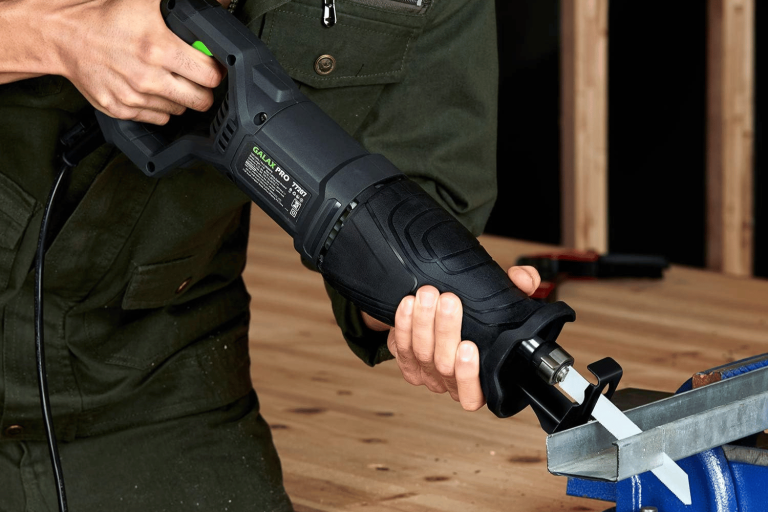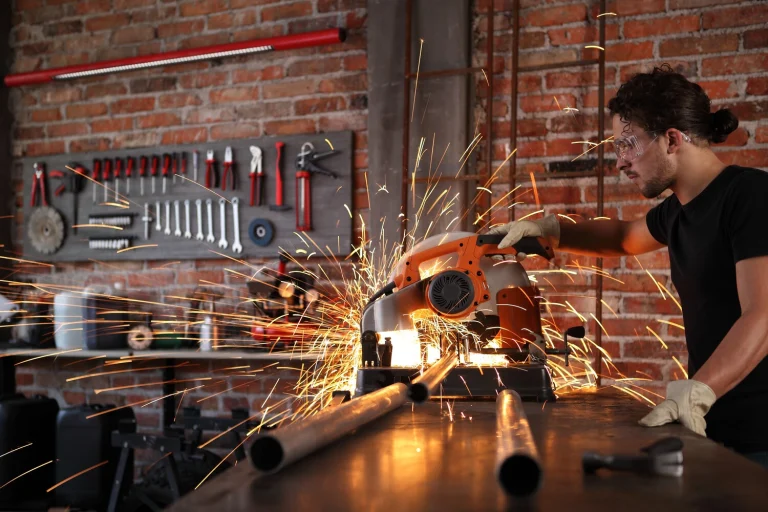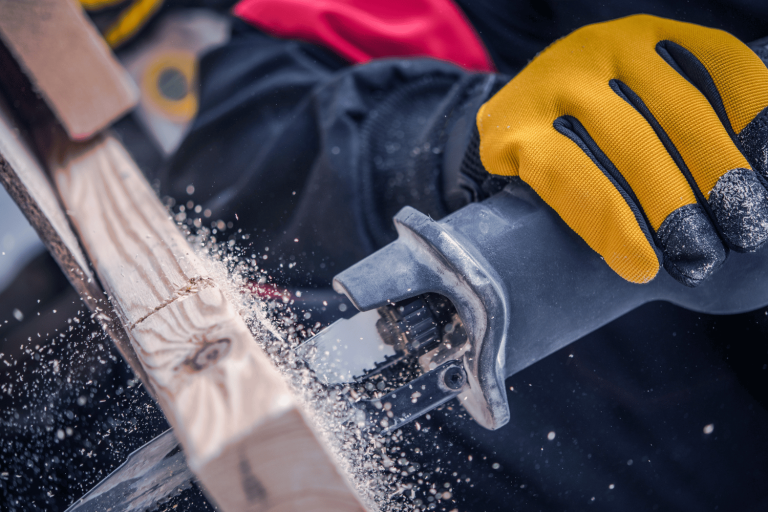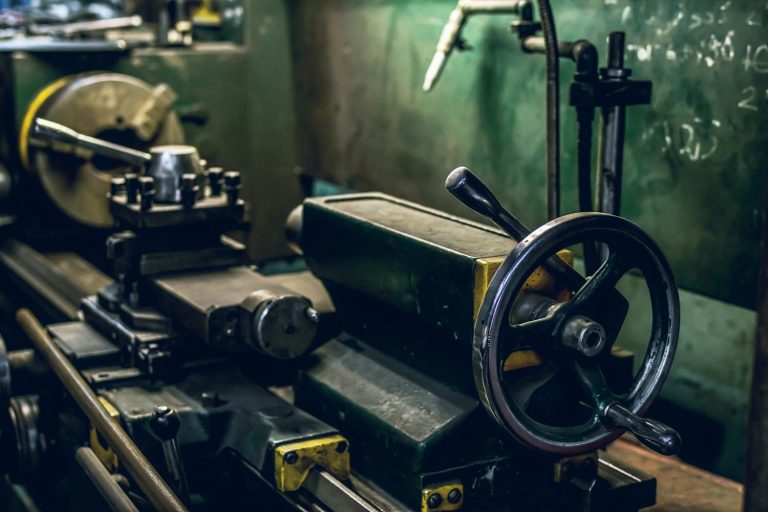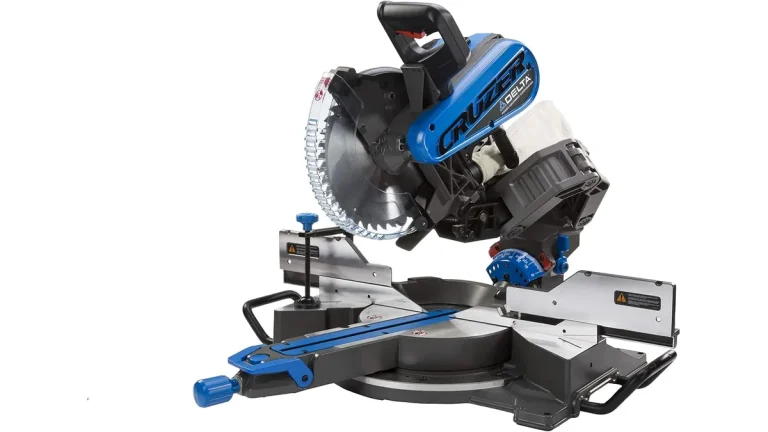60 vs 80 vs 100 Tooth Miter Saw Blade Comparison Guide
Welcome to the world of DIY, where the roar of a miter saw is music to our ears, and the right blade can turn a good project into a masterpiece. Whether you’re a weekend warrior or a seasoned craftsman, one thing’s for certain: the miter saw is a cornerstone in your workshop. But with so many blades to choose from, how do you know which one will make the cut for your next project?
In this comprehensive guide, we’ll delve into the intricacies of miter saw blades – from the nimble 60-tooth to the precise 100-tooth. We’ll dissect their differences, uses, and how they can impact your work. By the end of this article, you’ll be equipped with the knowledge to select the perfect blade for your miter saw, ensuring that your next project is not just good, but saw-droppingly great. So, grab your safety goggles and let’s get into the nitty-gritty of miter saw blades!
Overview and Comparison: 60 vs 80 vs 100 Tooth Miter Saw Blades
If you’ve ever stood in the power tools aisle scratching your head over which miter saw blade to pick, you’re not alone. It’s like choosing between chocolate, vanilla, and strawberry – they’re all great, but for different reasons. Today, let’s dive into the world of miter saw blades, specifically the 60, 80, and 100-tooth variants. Trust me, after 20 years of DIYing, I’ve had my fair share of “oops” and “aha” moments with these tools!
60 Tooth Miter Saw Blade Overview
Alright, let’s kick things off with the 60-tooth miter saw blade. Think of this one as your trusty all-rounder. It’s like the Swiss Army knife in your toolkit. These blades are fantastic for general carpentry work.
- Best For: Rough cuts and speed.
- Cutting Style: If you’re slicing through plywood, softwood or hardwood, this blade won’t bog down. It gives a reasonably clean cut but won’t win any beauty contests.
- Pro Tip: Remember, speed is the name of the game here. So if you’re working on a project where precision is less critical than getting the job done quickly, the 60-tooth blade is your buddy.
80 Tooth Miter Saw Blade Overview
Moving on to the 80 tooth saw blade. This one’s a step up in the refinement department. It’s like choosing a fine pen over a regular ballpoint – the details matter more.
- Best For: Fine cuts and slower, more controlled operations.
- Cutting Style: The 80-tooth blade is your go-to for hardwoods or denser materials. You’ll get a smoother finish than with the 60-tooth, making it ideal for projects where appearance counts.
- Pro Tip: Patience is key with this blade. It’s not about speed; it’s about precision. Great for those DIY projects where you’re showing off your craftsmanship.
100 Tooth Miter Saw Blade Overview
Finally, let’s talk about the 100-tooth miter saw blade. This is the luxury sedan of miter saw blades – smooth, refined, and all about the finish.
- Best For: Ultra-fine cuts and top-notch finishes.
- Cutting Style: Think veneers, laminates, and moldings. When you need a cut as smooth as butter, this blade steps up.
- Pro Tip: This blade demands respect for its finesse. It’s not for hacking through lumber; it’s for those final touches that make your project look like a million bucks.
Key Differences Among Miter Saw Blades
I know that using the right miter saw blade can be the difference between a project you’re proud of and one you’d rather forget. Let’s break down the key differences among miter saw blades to help you make the best choice for your projects.
Tooth Count and Its Impact
Think of tooth count on a blade like pixels in a photo – the higher the count, the finer the detail.
- Lower Tooth Count: Great for fast, rough cuts. They remove more material quickly but can leave a rougher finish.
- Higher Tooth Count: These are your detail artists. They cut slower but leave a smoother edge, perfect for visible surfaces or delicate materials.
Material Suitability and Blade Functionality
Not all blades are created equal, and different materials can be as different as chalk and cheese when it comes to cutting.
- Soft Materials: Lower tooth count blades can handle these well.
- Hard Materials: Need a higher tooth count for a clean cut without burning the material.
- Specialty Materials: Some blades are designed for specific materials, like laminates or metals, so always check the blade’s compatibility.
Cutting Performance and Quality
Performance and quality are the heart and soul of your cutting experience.
- Aggressive Cuts: A lower tooth count blade cuts more aggressively. It’s like sprinting – fast but not always the prettiest.
- Precision Cuts: Higher tooth count blades are like a marathon runner – slower, but with a steady, quality finish.
Chipping, Splintering, and Finish Quality
No one likes a project that looks like it’s been chewed by a beaver. Different blades can significantly affect the finish quality.
- Avoiding Splintering: Use a blade with a higher tooth count for delicate surfaces to avoid chipping and splintering.
- Rough Cuts: If the finish isn’t a priority, a lower tooth count blade is more forgiving.
Price Considerations and Value
Price is always a factor, but remember, cheap can be expensive in the long run.
- Budget Blades: They can be cost-effective for infrequent use or less critical projects.
- Investment Blades: Higher-priced blades often offer better performance and longevity, especially for frequent use or specialized materials.
Technical Aspects of Miter Saw Blades
Diving into the nitty-gritty of miter saw blades, let’s untangle some technical aspects that can make or break your DIY project. You don’t need a degree in engineering here, just some handy insights to guide your blade choice!
Teeth Per Inch (TPI) and Cutting Efficiency
- What’s TPI? TPI stands for “Teeth Per Inch,” and it’s a big deal in saw blade land. The higher the TPI, the more teeth there are in a given inch of the blade.
- Efficiency Factor: Blades with higher TPI are like a fine comb, they take small, neat cuts and are more efficient for detailed work. Lower TPI blades are like a rake, taking bigger bites, which is more efficient for quick, rough cuts.
- Balancing Act: Too high a TPI can mean slower cutting speeds, but a smoother finish. Conversely, too low a TPI can lead to faster cuts but with a rougher finish.
Compatibility with Various Materials
- Matchmaker Game: It’s vital to match your blade to your material. Using a blade meant for wood on metal? You’re in for a bad time.
- The Rule of Thumb: Hard materials generally require blades with a higher TPI for a cleaner cut, whereas softer materials can be cut efficiently with lower TPI blades.
- Specialty Blades: There are blades designed specifically for certain materials – like non-ferrous metals or plastics. Always check the blade’s label for its intended use.
Factors Affecting Smoothness of Cut
- TPI’s Role: A higher TPI typically results in a smoother cut, but that’s not the only factor.
- Blade Width and Design: Thinner blades can reduce resistance and create a smoother cut. The design of the teeth (like alternating top bevel or triple-chip grind) also plays a role.
- Material Matters: The type of material you’re cutting and its condition (like wet vs. dry wood) can impact the smoothness of the cut.
Remember, a miter saw blade is more than just a piece of metal with teeth – it’s a precision tool that needs to match your project’s demands. By understanding these technical aspects, you’re setting yourself up for smoother, more efficient cuts, and ultimately, better DIY projects.
Frequently Asked Questions (FAQs)
In the world of miter saw blades, questions are as common as sawdust at a woodshop. Let’s tackle some of the most frequent queries that pop up. After all, the right information can be as crucial as the right tool!
Can I use a 100-tooth blade for all my cutting needs?
While a 100-tooth blade offers a super smooth finish, it’s not a one-size-fits-all solution. It’s great for fine, detailed work on delicate materials, but for rougher cuts or quicker jobs, a blade with fewer teeth (like a 60-tooth) is more efficient. It’s all about using the right blade for the right job.
How often should I replace my miter saw blade?
The lifespan of your blade depends on how often you use it and what materials you’re cutting. A telltale sign that it’s time for a replacement is when cuts become rougher and require more effort. Regular maintenance, like cleaning and sharpening, can extend the life of your blade.
Is a higher-priced blade always a better choice?
Not necessarily. While higher-priced blades often offer better quality and durability, the best choice depends on your specific needs. If you’re an occasional DIYer, a budget-friendly blade might suffice. For frequent or specialized use, investing in a higher-quality blade can be more cost-effective in the long run.
Can I sharpen my miter saw blade myself?
Yes, you can sharpen your miter saw blade yourself, but it requires the right tools and a bit of skill. If you’re not confident in doing it, it’s better to have it professionally sharpened or replaced. Incorrect sharpening can damage the blade and affect its performance.
What’s the best blade for cutting hardwood?
For hardwood, you generally want a blade with a higher tooth count for a smoother cut. An 80-tooth or 100-tooth blade is usually a good choice. The finer teeth create less tear-out and give a cleaner finish, which is essential for hardwood projects.
Final Recommendations and Verdict
Alright, DIYers, as we wrap up this miter saw blade journey, let’s cut to the chase (pun intended) with some final recommendations and a verdict that should help steer your decision-making process.
For the Casual DIYer:
- If you’re an occasional DIY enthusiast working on a variety of projects, a versatile blade like an 80-tooth miter saw blade strikes a nice balance between smoothness and speed. It’s like the Swiss Army knife of miter saw blades – good for many situations.
For the Precision Craftsman:
- If your projects demand precision and a flawless finish, like cabinetry or fine woodworking, invest in a 100-tooth blade. It’s like the fine brush in an artist’s toolkit, perfect for those detailed and delicate cuts.
For the Heavy-Duty Worker:
- And for those of you tackling more robust, less detail-oriented projects, a 60-tooth blade will be your best bet. It’s the sledgehammer in your arsenal – great for getting through the tough stuff quickly.
The Ultimate Verdict:
- Your choice in a miter saw blade should be dictated by the specifics of your project. The material you’re cutting, the finish you need, and the speed at which you want to work all play crucial roles in deciding the best blade for the job.
- Don’t forget to consider the longevity and maintenance of your blade. A well-maintained blade not only lasts longer but also ensures consistent performance.
- Lastly, remember that no single blade can do it all. Having a couple of different blades on hand for various projects is a wise strategy for any serious DIYer.
In the end, the right miter saw blade can elevate your project from good to great. It’s not just about making cuts; it’s about making the right cuts with precision, efficiency, and safety. So choose wisely, cut confidently, and let the chips fall where they may (preferably away from your eyes – safety first, folks!).


